Abstract
The latest data (2022) on vegetable production in Sudan shows that okra has the highest yield, reaching 296kt. Agriculture in Sudan is mainly dependent on the drylands, and crop production is increasing with the development of irrigation technology. Okra is well suited to the region’s climate and has recorded very high yields, but another factor is its efficient land use compared to other vegetables. Tomatoes are produced for specific purposes, primarily for domestic consumption and processing. Tomato production is also increasing, and demand for export is also growing, but improvements to post-harvest preservation techniques and transportation systems remain a challenge. Vegetable cultivation in Sudan is characterized by the concentration of certain crops in each region, and the items cultivated tend to change depending on the climate and market demand. For example, tomatoes are grown extensively but further investment is needed to improve their quality and make them more competitive in the market. Overall, vegetable production in Sudan has shown steady growth, with okra and tomato production playing an especially important role, but there is a need to improve agricultural efficiency and distribution of produced produce.
Production (by vegetables)
Looking at Sudan’s vegetable production data from 1961 to 2022, okra recorded the highest production volume in 2018, reaching 302kt. This year was the peak year, and the current production volume of okra is about 296kt, which is equivalent to 98.1% of that amount. Okra is a crop adapted to the dry regions of Sudan, and its cultivation area and production volume remain at a stable and high level. In particular, with the improvement of irrigation technology, productivity has improved significantly, and some of the supply exceeds domestic demand, even for export. On the other hand, okra production has shown a slight downward trend since its peak, which may be due to factors such as climate change, water resource constraints, and limitations in agricultural technology. In Sudan, while production of other vegetables remains relatively stable, certain crops such as okra tend to have a large impact on the market. In the future, the challenges will be to improve the production efficiency of okra and other major crops, improve their quality, and develop distribution networks, and strategies to ensure a stable supply will be required. Adaptation measures to minimize the effects of climate change are also an important factor.
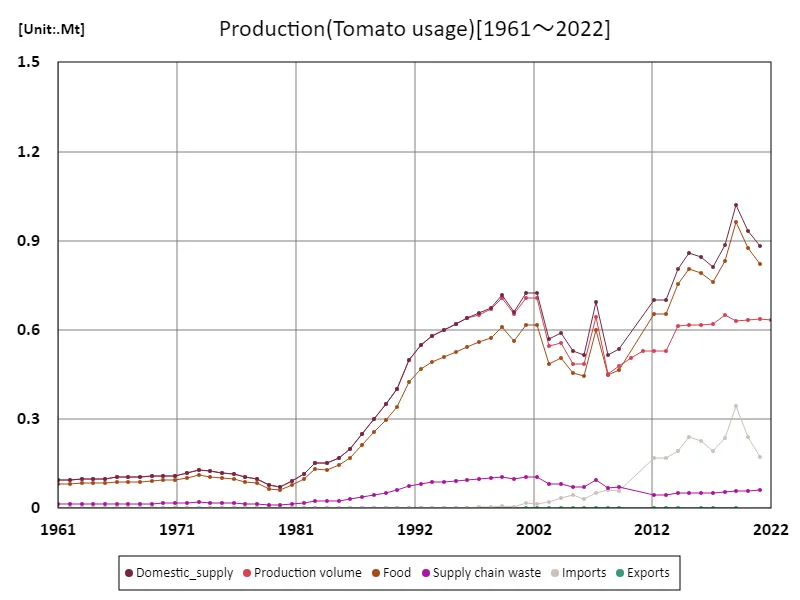

The maximum is 1.02Mt[2019] of Domestic_supply, and the current value is about 86.5%
Yield(by vegetable)
Vegetable production data for Sudan from 1961 to 2022 shows that eggplant recorded the highest yield of 28.3t/ha in 1989, but the current yield is about 7.4t/ha, or 26.3% of that. This significant decline can be attributed to a variety of factors. First, eggplant is often grown in the arid regions and unstable climatic conditions of Sudan, where climate change and water resource shortages have a significant impact on production. Additionally, the slower development of agricultural techniques and irrigation systems compared to other crops is also thought to be a factor in the decline in eggplant productivity. Additionally, areas where eggplant is grown also suffer from problems with soil degradation and pests and diseases, which may have led to reduced yields. The decrease in eggplant production is also likely due to changes in market demand within Sudan and the shift to other crops. One of the reasons for this is that in recent years, other vegetables such as okra and tomatoes have become more popular, resulting in a reduction in the area in which eggplant is grown. Future challenges include improving eggplant cultivation techniques, strengthening measures to combat pests and diseases, and introducing agricultural methods that are adapted to climate change. These measures are expected to restore eggplant productivity.
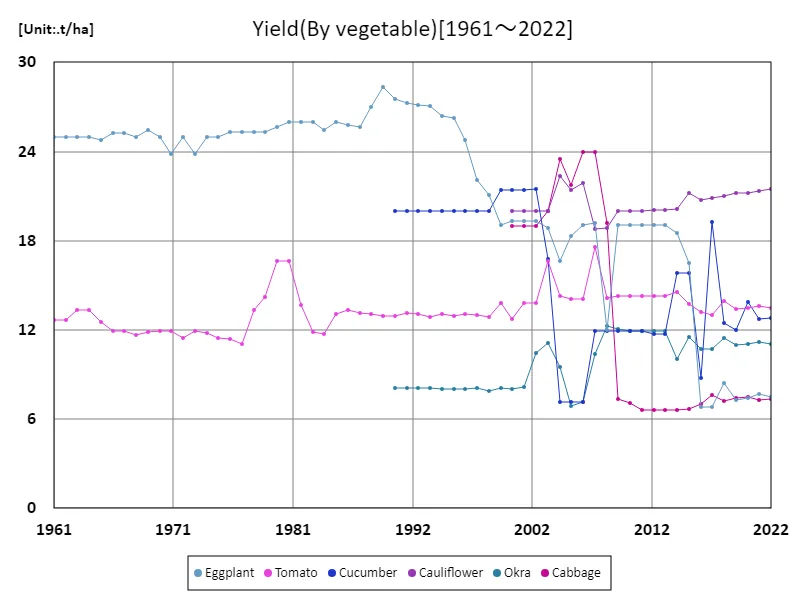

The maximum is 28.3t/ha[1989] of Eggplant, and the current value is about 26.3%
Land use (by vegetables)
Vegetable land use data in Sudan (2022) shows that tomato occupies the largest amount of land, covering an area of 46.9 kha. In contrast, the average land use area is 17.3kha, with the overall total being 104kha. Large scale cultivation of tomato indicates its importance as an agricultural product due to its high demand in the domestic market and its use in a variety of culinary and processed products. Tomatoes are cultivated extensively in Sudan compared to other crops because they are well suited to the country’s climate and soil, and can be produced efficiently even in the arid regions. Furthermore, because tomatoes require a lot of water, improving irrigation technology is an important factor supporting agricultural production. This ensures stable production of tomatoes, making them an essential part of the nation’s diet. On the other hand, land use for vegetables other than tomatoes is relatively small, and in particular, the average land use area is 17.3 kha, which indicates that cultivation of crops other than major crops is carried out on a limited area. Agriculture in Sudan is highly dependent on certain crops, with crop selection being heavily influenced by climatic conditions and market demand. Future challenges include expanding the production of other vegetables, diversifying land use, and establishing a sustainable agricultural system.
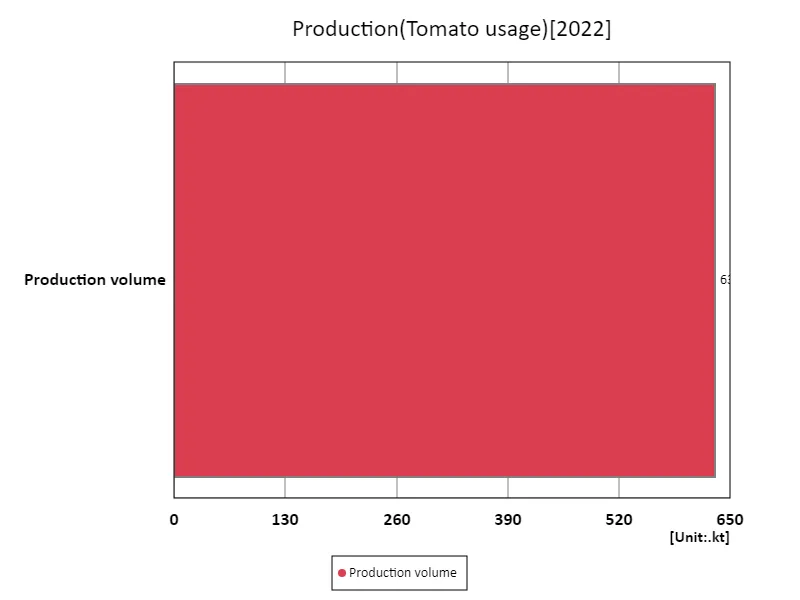

The maximum is 633kt of Production volume, the average is 633kt, and the total is 633kt
Tomato usage
Data on Sudan’s tomato production by use (the most recent for 1961) shows that domestic supply was the highest at 1.02 Mt. At this point, tomatoes account for the majority of domestic consumption, with domestic supply dominating production. In Sudan, tomatoes are primarily sold as fresh vegetables in the market and consumed according to demand in home cooks and restaurants. Although a certain amount of tomatoes for processing is produced, the overwhelming majority are supplied domestically. Due to its versatility, tomatoes are deeply rooted in Sudanese food culture and play an essential role in the cuisine. Tomatoes can also be harvested in a relatively short period of time and are grown on a large area, making it easy to ensure a stable supply. This has made tomatoes a very important crop in the domestic market, with production driven by demand. In recent years, advances in agricultural technology and improvements to irrigation systems in Sudan have increased tomato production and strengthened supply to meet domestic demand. On the other hand, problems with the preservation and distribution of tomatoes remain an issue, and there is a need to improve quality preservation and transportation systems. In the future, we expect to see an expansion in the production of processed tomato products and for export, which could lead to more diversified market development.
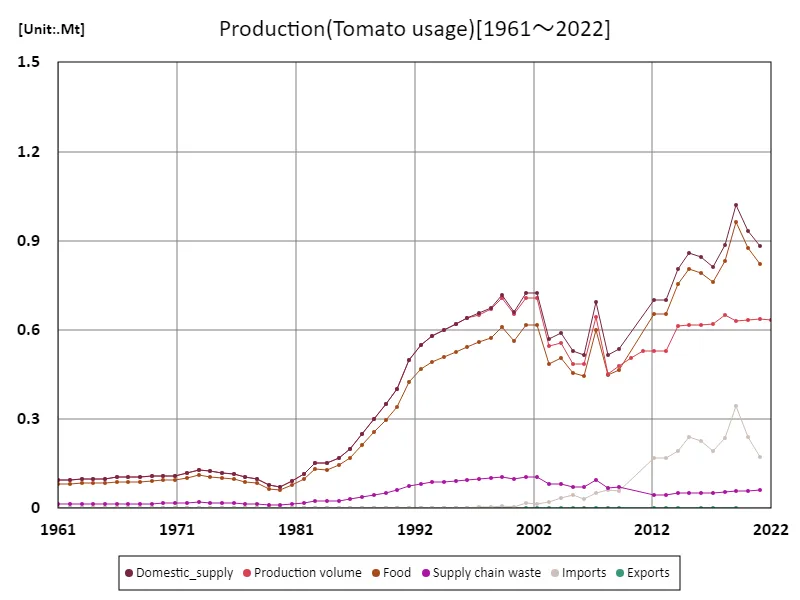

The maximum is 1.02Mt[2019] of Domestic_supply, and the current value is about 86.5%
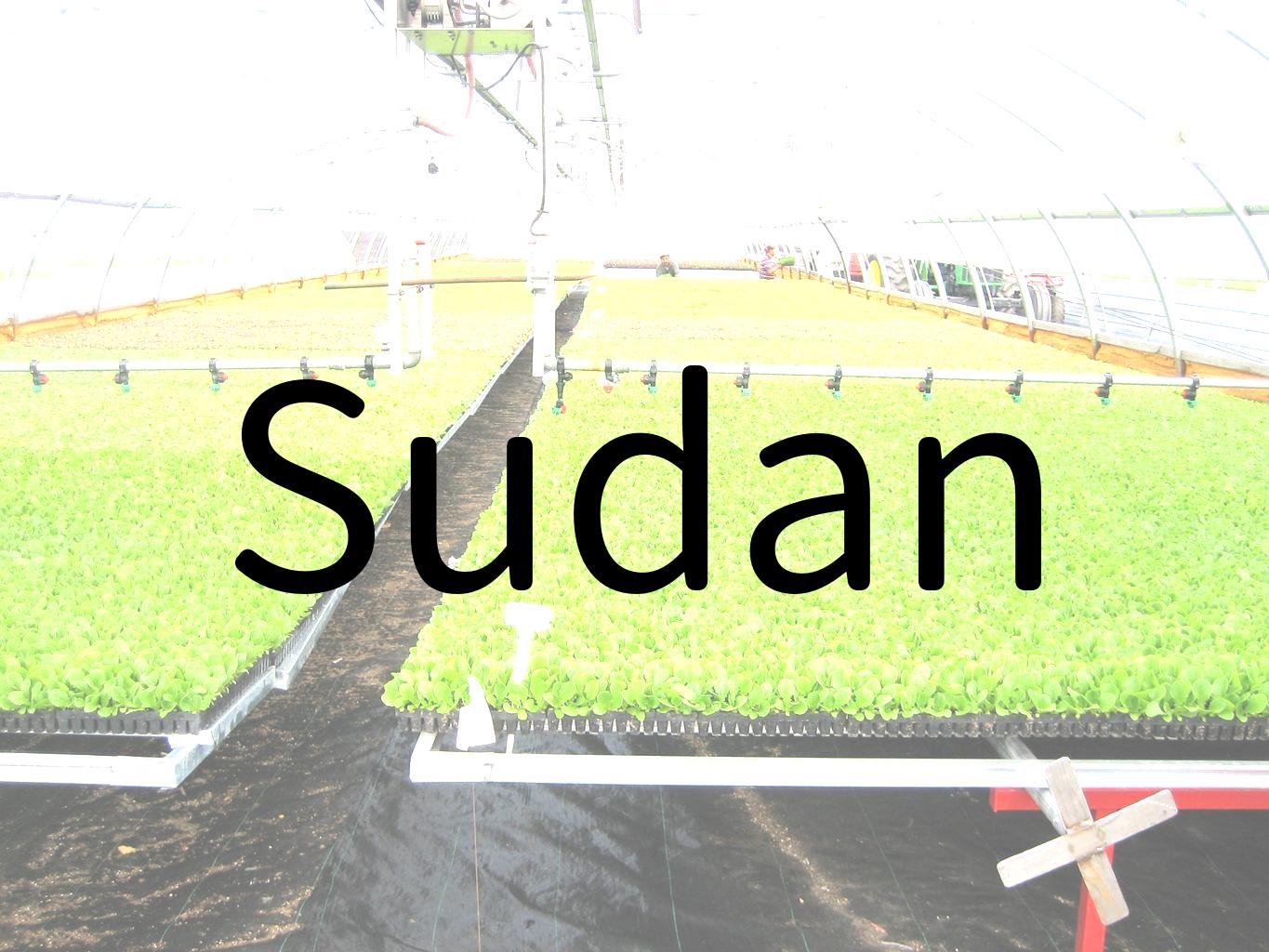


Comments